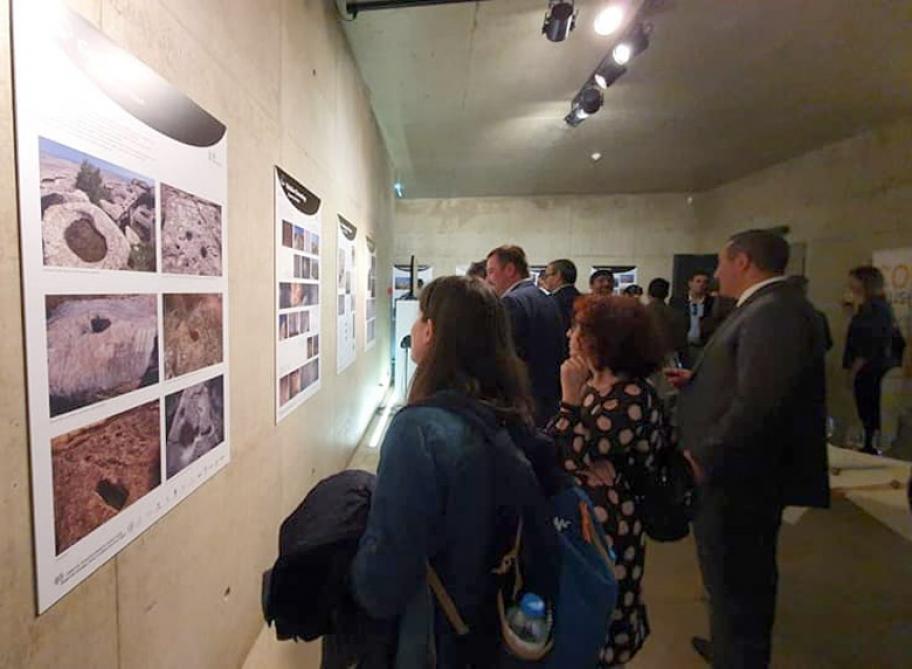Gobustan rock art on display in Portugal [PHOTO]
![Gobustan rock art on display in Portugal [PHOTO]](https://www.azernews.az/media/2019/10/10/crosaa1.jpg)
By Laman Ismayilova
An exhibition dedicated to Gobustan rock art has solemnly opened at the Côa Museum in Portugal.
The exhibition "Crossing Europe with Rock Art" was organized as part of the Day of European Rock Art, Azertag reported.
Along with Portuguese rock art experts and representatives of archaeological reserves and museums, the opening was attended by Mayor of Foz Côa Gustavo Duarte and the director of the Gobustan State Reserve Gobustan Vugar Isayev.
In his speech, Gustavo Duarte stressed that the cooperation between the two reserves strengthens the ties between Azerbaijan and Portugal.
Vugar Isayev, in turn, said that the exhibition indicates the high level of cooperation between the two reserves.
After visiting the exhibition, the director of the Fundao Archaeological Museum Pedro Salvado expressed his desire to organize an exhibition in Gobustan at the Fundao Museum.
In July of this year, an exhibition dedicated to the Foz Côa Reserve opened in Gobustan and was visited by over 7,000 visitors during 10 days.
The exhibition "Crossing Europe with Rock Art" will continue until the end of the year.
Gobustan is home to one of the world's largest ancient petroglyphs collections. Settled since the 8th millennium BC, the area contains more than 600,000 distinct paintings, going as far back as 20,000 years to as recent as 5,000 years ago.
The rock paintings dating back to 8 millenniums reflect different hunting scenes, ceremonial and ritual processes of the habitants of these places. Gobustan petroglyphs were repeatedly investigated by the famous Norwegian explorer and adventurer Thor Heyerdahl, who recognized local boats petroglyphs as the oldest known images of pirogue in the world.
Most of the rock engravings depict primitive men, animals, battle-pieces, ritual dances, bullfights, boats with armed oarsmen, warriors with lances in their hands, camel caravans, pictures of sun and stars.
Gobustan was inscribed on the UNESCO World Heritage list in 2007.
Listed as a World Heritage Site by Unesco since 1998, the Foz Côa Valley has over one thousand rock with rupestral marks, identified in over 70 different places. They are predominately Palaeolithic engravings, dating back to around 25.000 years ago.
They represent horses, oxen, goats, aurochs, dears and armed hunters and were carved onto vertical schist surfaces.
---
Laman Ismayilova is AzerNews’ staff journalist, follow her on Twitter: @Lam_Ismayilova
Follow us on Twitter @AzerNewsAz
Here we are to serve you with news right now. It does not cost much, but worth your attention.
Choose to support open, independent, quality journalism and subscribe on a monthly basis.
By subscribing to our online newspaper, you can have full digital access to all news, analysis, and much more.
You can also follow AzerNEWS on Twitter @AzerNewsAz or Facebook @AzerNewsNewspaper
Thank you!

